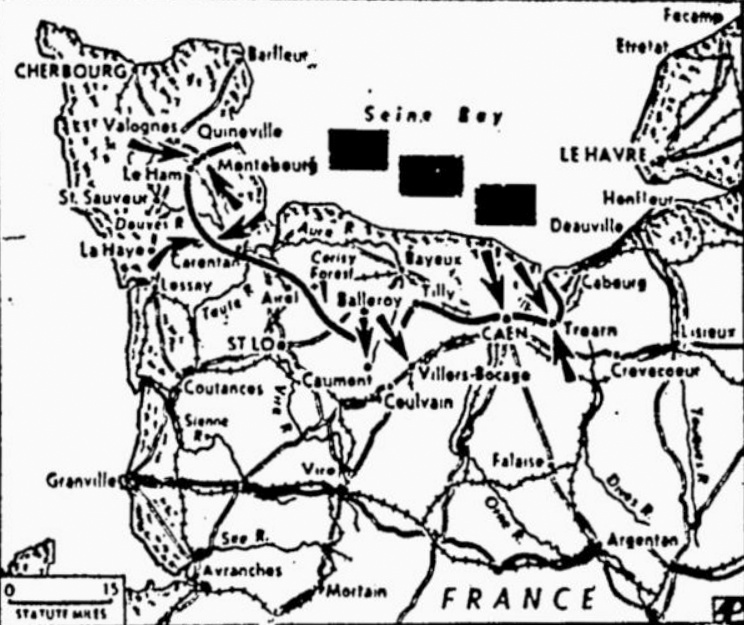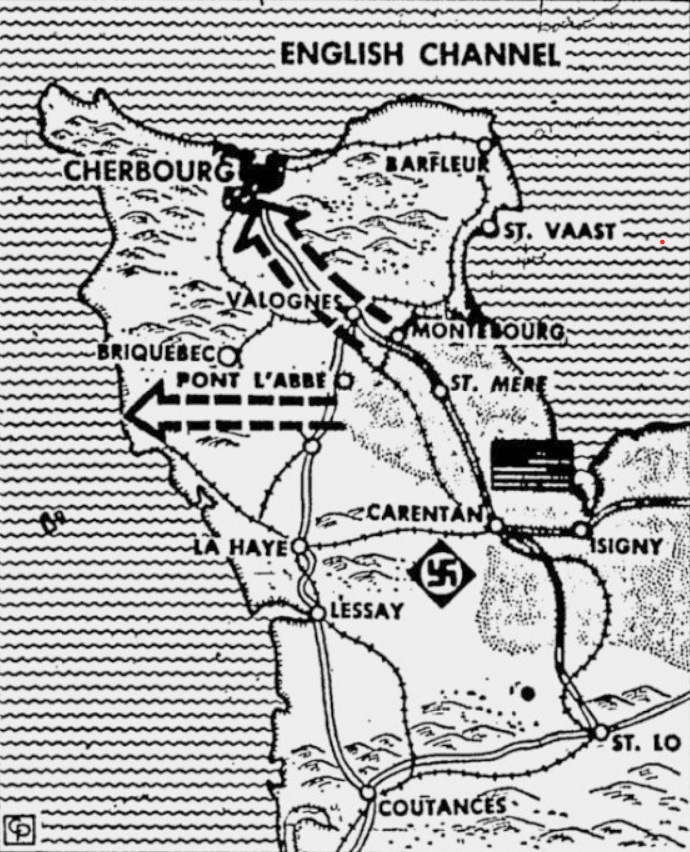Milliardäre ohne Deckung –
Roosevelts Schwindel mit den Invasionsfrancs
Stockholm, 14. Juni –
Seit de Gaulle in London weilt, tritt der Streit um die Invasionsfrancs, die Roosevelt mit seinem Bild hat drucken und den Invasionstruppen hat aushändigen lassen, stark in den Vordergrund. Den Anstoß dazu gab die Enttäuschung de Gaulles darüber, daß bei seinen Besprechungen mit Churchill nicht, wie er gefürchtet hatte, über Verwaltungsfragen, sondern in der Hauptsache über das Finanzproblem gesprochen worden ist. De Gaulle und seine Mitläufer sind entsetzt darüber, daß die 80 Milliarden Francs, die seine anglo-amerikanischen Freunde in die besetzten französischen Gebiete hineinpumpen wollen, nicht einmal eine Unterschrift, geschweige denn eine Deckung haben und daß weder die 1,4 Milliarden Dollar französische Guthaben, die eingefroren in den USA lägen, noch das Gold, das den Franzosen in Martinique von den Anglo-Amerikanern geraubt wurde, als Deckungsgrundlage für die Invasionsfrancs vorgesehen seien.
Während Churchill im Unterhaus das Thema de Gaulle kurzerhand abschnitt, hat Roosevelt auf seiner Pressekonferenz am Dienstag die Befürchtungen der Gaullisten zu zerstreuen versucht, indem er behauptete, das Invasionsgeld sei nach Beratung mit Vertretern des französischen Nationalkomitees herausgegeben worden und habe die Deckung der Regierungen in London und Washington. Er versicherte weiter, daß in den besetzten französischen Gebieten alle erdenklichen Maßnahmen getroffen worden seien, um eine unnütze Ausgabe des Invasionsgeldes zu verhindern. Mit dieser Erklärung dürfte Roosevelt die Franzosen kaum beruhigt haben.
Die französische Zeitung Aujourd’hui nennt die Dinge beim rechten Namen, wenn sie schreibt, Roosevelt wolle mit seinem Invasionsgeld einen doppelten Coup landen, einmal wolle er das legale Geld diskreditieren und zweitens die Inflation begünstigen. So ruiniere er gleichzeitig die Finanzen und die Wirtschaft Frankreichs und lasse sich die Kosten des Krieges gewissermaßen zweimal bezahlen.
Wenn sich die Franzosen daran erinnern, daß die Anglo-Amerikaner immer wieder beteuerten, sie würden in die von ihnen besetzten Gebiete Lebensmittel und sonstige Güter in Mengen bringen, so bekommen sie durch den Francsschwindel Roosevelts einen Vorgeschmack von dem, was sie von ihren „Befreiern“ zu erwarten hätten. Im Übrigen werden sie sich der Äußerung des Juden Lehman, des Leiters der vielgenannten UNRRA, erinnern, der, als dieses jüdische Unternehmen gegründet wurde, großspurig erklärte, den Heeren der Anglo-Amerikaner würden die notwendigen Bedürfnisse des täglichen Lebens auf dem Fuße folgen, der dann aber sehr bald seine Versprechungen einschränkte und darauf hinwies, daß die Weltvorräte an Nahrungsmitteln, Bekleidung, Werkzeugen, Saatgut und dergleichen notwendigen. Dingen durch die vier Jahre Krieg bereits erschöpft und daher nicht in ausreichendem Maße vorhanden seien. Auch der britische Ernährungsminister hat kürzlich die Gelegenheit genommen, falsche Illusionen zu zerstören, indem er bemerkte, von England könne man keine Nahrungsmittel erwarten, da England selbst ein Einfuhrland sei.
Die Franzosen, die bei dem ersten Weltkrieg mit ihren englischen und amerikanischen Freunden schlechte Erfahrungen gemacht und schon verschiedene Währungsabwertungen hinter sich haben, werden aus dem Rooseveltschwindel und den ebengenannten Erklärungen zu der Erkenntnis kommen müssen, daß, erreichten die „Befreier“ ihr Ziel, das für Frankreich den finanziellen Ruin und den wirtschaftlichen Bankerott bedeuten würde.

